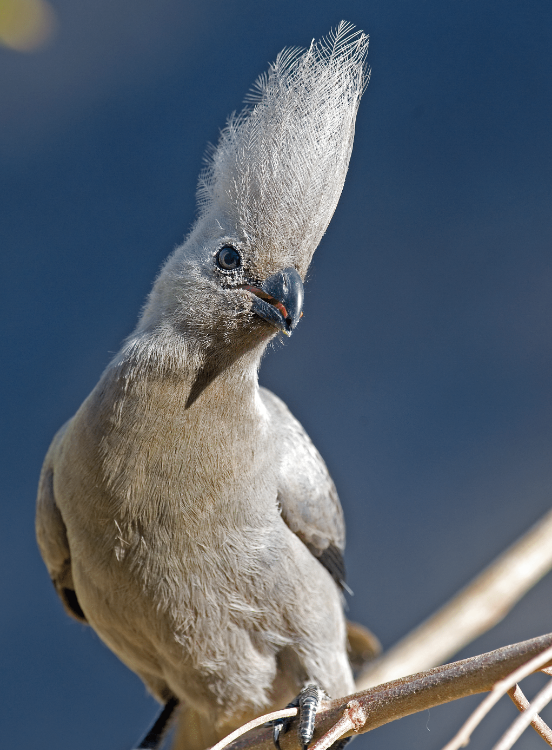Toju’we Tours
July 19, 2012Bushmen Safari – Living intercultural exchange
July 19, 2012African Openbill
Anastomus lamelligerus
Roberts No 87
by Pompie Burger
Koos Kombuis, the well-known Afrikaans songwriter, once wrote lyrics proclaiming that a student’s main pastime was doing nothing and talking nonsense, although he was a bit more explicit. Watching the Openbills standing on the banks along the big rivers in the north, I cannot but think about the student thing of doing nothing.
These birds are highly gregarious and are sometimes seen in massive flocks of up to 500, either doing nothing or drifting high above, looking very much like vultures, using thermals to move from their roosting sites, usually in high trees, to their feeding and doing-nothing spots. Except for their habit of doing nothing, their most impressive characteristic is their open bill, which is specifically adapted for feeding (not for talking nonsense, neither for delivering babies.) The Openbill’s food consists almost entirely of snails and mussels, which are caught and removed from their shells with the specially adapted bill. The bill consists of an upper mandible, which is relatively straight to hold the prey in position, and a lower sharp-tipped mandible to open and remove the flesh from the shell.
Compared to other storks, the African Openbill is quite small, with only the Black and Abdim’s storks being smaller. Openbills occur predominantly along the rivers of the north, although some of them venture further south, albeit seldom in large numbers, where they are found at dams and lagoons. Seeing these huge flocks, it is difficult to imagine that, due to their dwindling habitat, they are a near-endangered species. If by any chance you have not yet seen an Openbill, I suggest you visit the Caprivi Region, where the chances are good you will happen upon a flock of these ever-gaping birds.
Like some of the other storks, African Openbills also practise urohydrosis (urinating on their legs) to cool down via evaporating and the direct cooling effect of the urine, which explains their white legs at times. On the other hand, I can imagine that this could just as well be a normal result of nature, since urinating on their legs seems to me quite unavoidable.
About the author:
Based in Windhoek, Pompie Burger is an orthopaedic surgeon whose part-time passion is photography, in particular wildlife, and specifically birds. This regularly takes him to the most remote corners of the country, resulting in riveting images and articles.
Pompie is the author and photographer of the coffee table book Birds of Namibia, which was published in 2008. The book contains articles and photographs which attest to the insight and knowledge of an accomplished observer.
Read more of his articles in our Birding Section.
This article appeared in the April/May ‘10 edition of Travel News Namibia.


